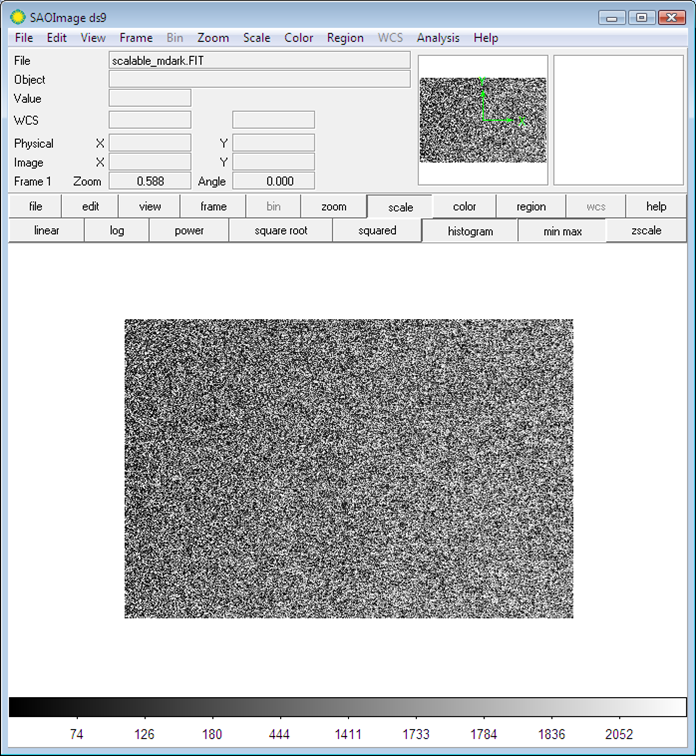Dark current is a result of thermal exposure to the CCD device. Background thermal noise causes the CMOS semiconductor pixels in the ST-7E CCD device to generate an e--h+ pair, even though no external stimulus photons are present. Pixel counts which arise from thermal e--h+ pair production are referred to as dark current.
Structure
As thermal noise is a random process, there should in theory be no structure present in the dark frame of a CCD device (i.e. completely random noise). This is not always the case however, as some regions of the CCD device may conduct heat more readily than others. This may be either due to thermal Bad Pixels or the positioning of CCD body compenents (e.g. cooling system) relative to the CCD chip.
For the Coldrick SBIG ST-7E CCD device, a small amount of small-scale structure was is present during shorter dark-current exposures. This structure became less apparent during longer dark current exposures however, suggesting that there are minimal thermal Bad Pixels in the CCD device.
Operating Temperature
By definition, dark current accrues more rapidly as the operating temperature of the device increases. Since dark current is an unwanted source of noise in astronomical images, astronomers aim to reduce its contribution as much as possible. It is therefore recommended to use as low an operation temperature as feasibly possible for a CCD device to reduce the dark current contribution present in its raw exposures.
An operating temperature of -5°C was used for the Coldrick SBIG ST-7E CCD device during the 2010-11 BSc Project.
Data Reduction
Dark current accrues linearly with time. An exposure of a given length therefore requires an appropriate amount of dark current to be subtracted from it, relative to the exposure length itself. The way this process is achieved is by generating a scalable master dark frame.
To generate a scalable master dark frame, a series of dark current exposures must be taken of the same length. It is advisable for these exposures to be as long as possible, since it can be scaled down later to apply to shorter exposures (it is not, however accurate to scale shorter dark exposures up to subtract from longer dark exposures). Longer dark current exposures also provide improve the signal to noise ratio of the resulting dark frames. Each frame should then be bias reduced before combining to form a median frame.
Since there is no contribution from the bias in this final median frame, it is referred to as a scaled master dark frame. The frame is referred to as "scalable", since it can be divided by a constant (scaled) to quantify the dark current contribution for any given exposure length. For example, if a 1 minute raw exposure has been taken by a given CCD device, a 30 minute scaled master dark frame previously calibrated for the device can simply be divided by 30 and subtracted from the image. This will provide an accurate indicator of the dark current contribution for 1 minute of operation of the device.
A scalable master dark frame must be taken at the same operating temperature at which all subsequent exposures are taken at in order for the dark current data reduction process to be reliable.
Once a scalable master dark frame has been generated for a particular device at a particular operating temperature, it can be scaled down and subtracted from any raw images subsequently taken by the device. Providing the operation temperature of the device remains constant and the device is not altered or damaged, no further dark current calibration needs to be performed.
Fig. 1 shows the scaled master dark frame used for the 2010-11 BSc Project. The frame was the median of 20x 30 minute bias-reduced dark current frames in a darkroom environment.
